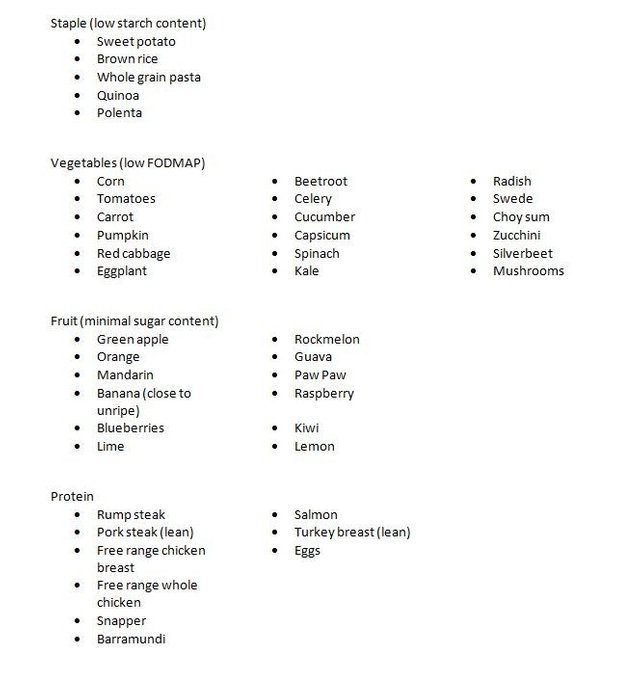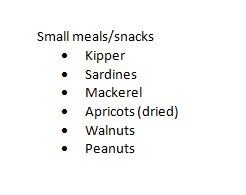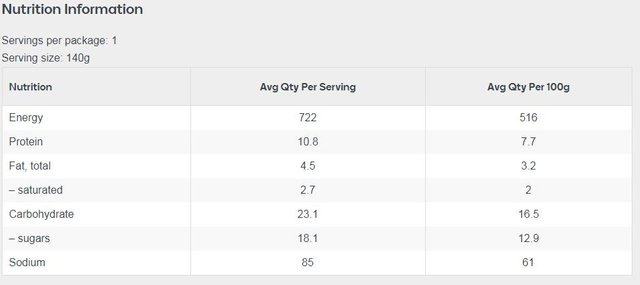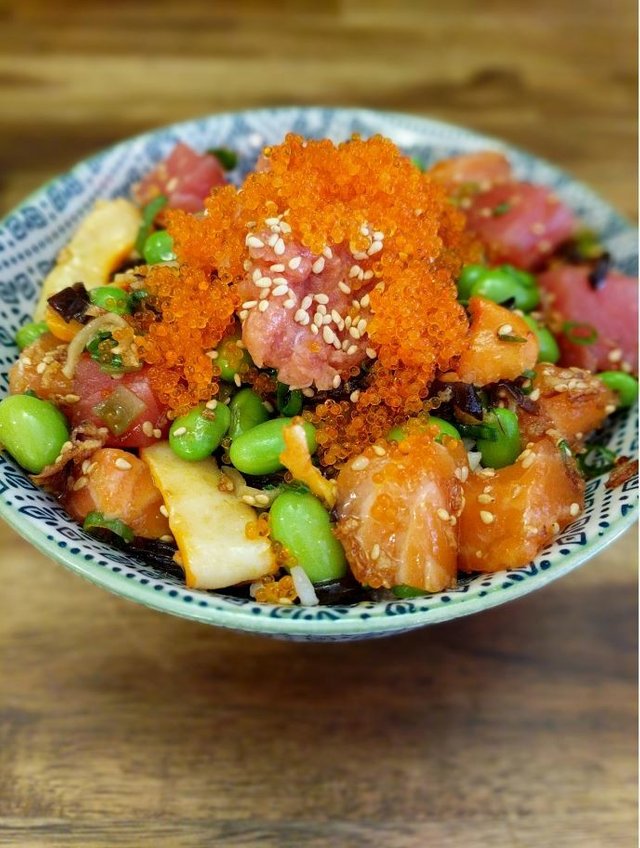10 Tips to create a healthy eating plan

Being motivated about healthy eating can be hard when you're on the go all the time but planning ahead can make things easier. When it comes to eating healthy, remember to keep it simple and make it a lifestyle choice not a diet trend. For a quick and easy guide, keep reading below for my top 10 tips to create a healthy eating plan:
1. Making a lifestyle choice
It took 2 things for me to realise that I needed to make a change in my lifestyle: watching a documentary called "That Sugar Film" and finding out I needed 6 fillings (costing $1500) during one dentist visit. Finding a reason makes it easier to motivate you in the long term.
2. Categorise the shopping list
I have a permanent checklist of foods on my smart phone, that way I'll always have a variety of foods to conveniently choose from. Stick to foods that are minimally processed either chemically (preservatives & additives) or physically (minced & reconstituted). My current list of whole foods:


Note: my list is limited due to IBS. A low FODMAP meal can help to reduce bloating and flatulence. You can read more about it here: https://www.ibsdiets.org/fodmap-diet/fodmap-food-list/
3. Packaged foods - read the labels
Don't be fooled by the nutrition claims and health kick marketing! Look at the ingredients and nutrition information panel (NIP) before putting it in the trolley. For a quick guide, review sugar content and remember that 4 grams of sugar equals 1 teaspoon of sugar. A typical 140g flavoured yogurt cup (with mint chocolate chip pieces) has 18.1g of sugar in one serving - that's equivalent to 4 and half teaspoons of sugar in one sitting. Health captions such as "No preservatives, colours or additives" and "low fat" doesn't always mean healthy.

Source: NIP from Chobani Greek Yogurt "flip" - Mint Chocolate Chip
Keywords to look out for and their equivalent alternatives:
Reconstituted: derived from concentrate, when added with water it is "reconstituted" most of these will contain a preservative to maintain the product quality, which leads to a longer shelf life and therefore more economically available. Room temperature fruit juices commonly use reconstituted fruits. Some manufacturers will use both such as 99.9% (orange juice and reconstituted orange juice). Alternative: look for labelling as 100% juice, which is liquid obtained from the fruit (or vegetable) and not from any concentrate. Nudie 100% Orange Juice and Original Black Label Orange Juice available from Woolworths in the cold section.
Flavoured: as the name suggests, a flavour additive is used which can be artificial or natural, meaning it may not always contain the actual fruit or vegetable. The ingredients label will usually provide a percentage of how much is present or if it is a flavour. If present, it may also again be reconstituted. Alternative: add fresh fruit (or vegetables) to your food (i.e. greek yogurt) for a more natural and healthier option.
No added sugar: common sweeteners such as Maltitol, Mannitol and Xylitol are used to enhance the flavour in sugar free foods. These contain polyols, with ingredient names usually ending in -ol or -isomalt and due to their complex structure, can be difficult for some people to digest. Symptoms may include diarrhoea, lower abdominal cramps, flatulence and bloating (similar to IBS symptoms). That guilt-free sugarless hot chocolate may not be such a good idea after all.
4. Clean eating
Avoid using too many pre-made bottled sauces as these can contain artificial flavours, additives, preservatives, skim milk powder and are high in sugars, sodium and saturated fats. Stock up on herbs and spices in fresh, powdered or dried forms. Other alternative sauces or pastes including soy sauce, fish sauce, sesame oil, soy bean paste, tomato paste, canned tomatoes, crushed ginger, crushed garlic, balsamic vinegar, to name a few can add a touch of flavour to a dish where you can control the quantity of how much goes in or lightly season with salt and pepper. I use extra virgin olive oil for a stir fry. Most times I don't add any oil at all when using a non-stick frying pan and allow the natural oils do the frying. Other cooking methods using minimal oil include: baking, steaming and boiling.
5. Balanced eating and exercise
I try to fit in light exercise during the week, 30 min walk (or 20 min jog) at the park daily and 10 min exercises that target my core strength every 2-3 days. Alternately on the weekends I'll try and fit in different activities e.g. longer walks (1-2 hrs), play social badminton (2 hrs), cycle (2 hrs) or go indoor rock climbing (1.5 hrs).
I mostly eat structured meals during the week but will still have my favourite treats occasionally in single portion sizes like chocolate cake or icecream. The idea of a balanced diet is to eat in moderation.
6. Meal structure
I eat at least two meals a day but can eat up to 5 times a day. The first thing I do when I get up is drink a glass of water, this helps to rehydrate your body after fasting for several hours over the night. I don't usually have breakfast but will have one green apple after I wake up. Between 9am - 12pm, I try to drink at least 500mL of warm water, green tea or peppermint tea. For lunch I make sure that I eat the same quantity as I do for dinner which usually lasts me until dinner which is about 7pm. Depending on how I feel, before bed I may also have another light meal like a bowl of oat porridge or 2 slices of toast.
My main meals will generally consist of 225g protein (approx, 1 chicken breast), 1 cup carbs (approx, 1 small bowl of brown rice) and two serve of veges in each meal and minimise added fat or oil content. I also like to include natural fatty acids and oils into my meal structure such as avocado, peanuts, walnuts, salmon and extra virgin olive oil.
I ate out the other day and had a "genki" bowl which loosely translates to healthy bowl in Japanese. The ingredients included raw salmon, fish eggs, edamame, seaweed, pickles (cabbage) and brown rice. It was incredibly delish and so healthy.

7. Green smoothie
If I'm struggling to get all my fruit and greens in, I usually have a green smoothie up to 2-3 times a week. I use a blender not a juicer so I am able to feel fuller from the fibre content. Ingredients include green apple, 100% orange juice, lime juice, celery, cucumber and spinach.
8. Fats, oils and spreads
Moderate intake of foods that are high in fat, sugar and salt. I maintain a diet low in dairy and gluten products but this is due to my moderate intolerance. To compensate, I simply have lactose free items and eat things like bread and pasta once or twice a fortnight instead of on a daily basis. In addition I have significantly reduced my sugar intake. The combined effort has made me feel more energised and suffer less IBS symptoms.
9. Caffeine and alcohol
Minimise caffeine and alcohol consumption. I love the taste of coffee but I have reduced my intake to 2-3 cups a week and gone decaf. I have around 2-3 standard drinks of red wine on occasion at home but will drink socially but not too often.
10. Water
Drink plenty of water during the day to keep you rehydrated. Keeping a bottle on your desk or dining table will also help to remind you to get a least 6L (ideally 8L) of water in your body.
If you liked these tips, don't forget to add me @tatk and stay tuned for more Thoughts According to Kay in my upcoming posts!
xx Kay